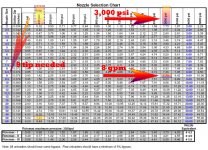jdc491
New member
Hey guys, I am planning to approach a small store owner about cleaning his store front and sidewalks and dumpster pad. Which leads me to my question, the store was remodeled about 9 months ago and some of the sadewalks replaced. The employees drag the trash bags over them to the dumpsters which has caused some pretty dirty sidewalks. With the concrete being so new I am wondering how you guys would recommend I approach the new concrete part of the property? Provided I get the account I planned on doing a few test spots, but say the new concrete can't handle much pressure how would you go about it? If any more info is needed I'll gladly add it in. Should have some pictures of said concrete today.


